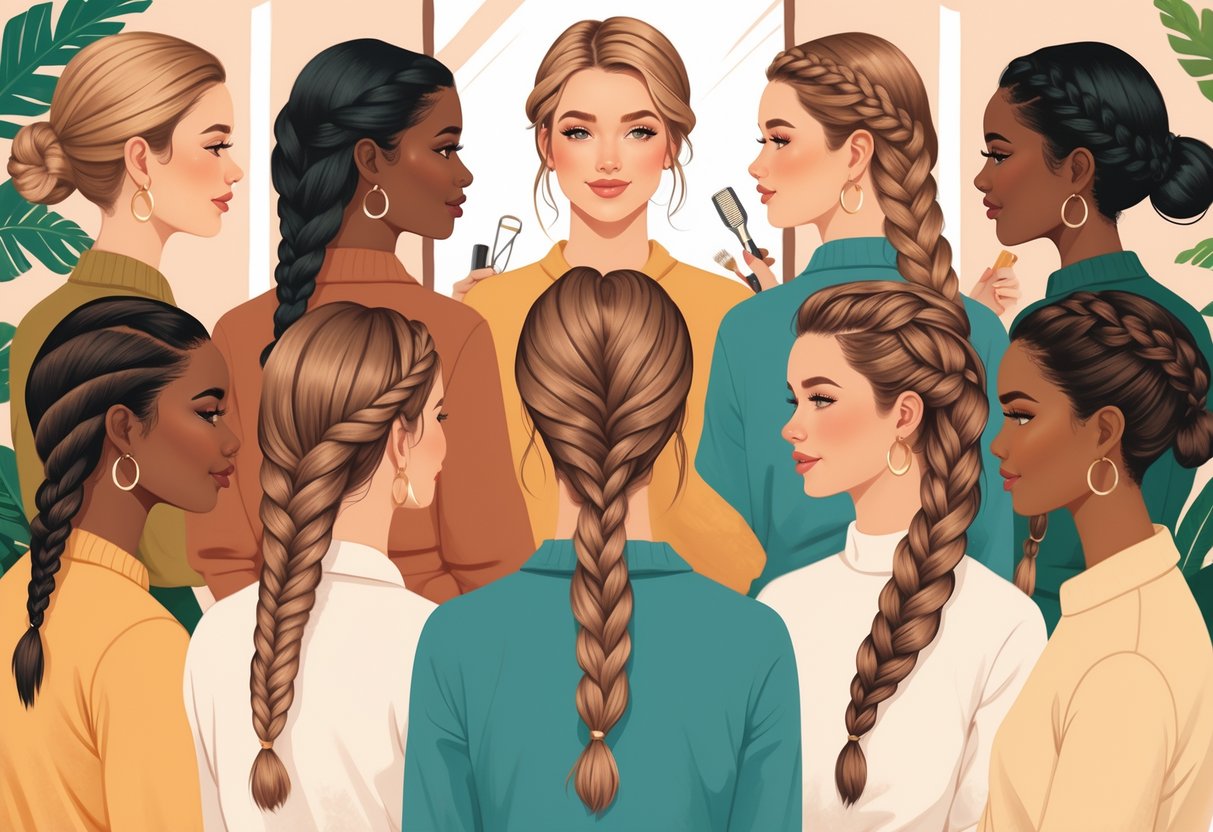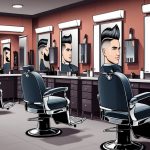
For anyone looking to streamline their morning routine while keeping their look polished, braided hairstyles are a go-to solution. Beginner-friendly braids make it easy to achieve a stylish appearance with minimal time and effort, even for those with little experience.
Whether someone has long, medium, or short hair, there are plenty of versatile braid styles that work for daily wear, special events, or keeping hair secure during workouts.
Unlike complicated updos, simple braids like the classic three-strand, French, or Dutch braids are both practical and easy to learn. Many of these styles can be mastered in just a few tries, providing lasting hold and a neat finish that stands up to a busy schedule.
Easy braided looks are also endlessly customizable, allowing for personal expression with minimal tools or products.
Those starting out can find great step-by-step guides for easy and cute braids or beginner-friendly techniques that break the process down into manageable steps. From a quick plait for running errands to more intricate looks for special occasions, braid styles offer both convenience and visual impact.
Essential Basics of Braided Hairstyles
Mastering braided hairstyles starts with understanding the types of hair used, selecting supportive products, and recognizing why protective styles make daily routines easier. These practical elements shape both the appearance and health of braided looks for beginners and seasoned individuals alike.
Understanding Braiding Hair and Hair Extensions
Braiding hair and hair extensions play a central role in the structure and longevity of braided hairstyles. Synthetic braiding hair is ideal for box braids and cornrows, while human hair extensions offer a more natural finish for intricate styles like French or Dutch braids.
Beginners often choose pre-stretched braiding hair, as it reduces tangling and simplifies the braiding process. Extensions add length and volume, making it possible to experiment with a variety of styles regardless of natural hair length or thickness.
For those looking to start, step-by-step guides can ease the process and help users practice key techniques before trying more advanced braids.
Choosing the Right Hair Products
The right hair products, such as detangling sprays, edge controls, and lightweight oils, can make braiding easier and help maintain the integrity of both natural hair and extensions. Shampoo and conditioner formulated for braided or protective styles reduce buildup on the scalp while keeping hair moisturized.
Using mousse or setting foam minimizes frizz and enhances shine. A simple list of helpful products includes:
- Leave-in conditioner for added moisture
- Edge control gel for neat hairlines
- Light styling oil to prevent dryness
Choosing products designed for braided styles ensures that the hair remains healthy, manageable, and visually appealing for longer periods between installations.
Benefits of Protective Styling
Protective styles like braids shield natural hair from daily manipulation and environmental stressors. These styles reduce breakage, retain moisture, and support overall hair growth by minimizing tension and friction.
Protective braids also offer a time-saving benefit, making daily styling quicker and less labor-intensive. Many easy braided hairstyles for beginners fall under the protective category, blending practicality with aesthetic value.
For those new to this type of styling, protective braids can be both a low-maintenance option and a foundation for experimenting with new looks.
Simple Braids for Complete Beginners
Braiding provides quick, tidy styling options that can work for any hair type or length. Using only minimum tools, it’s possible to create polished looks that stay secure and look stylish for everyday routines.
Classic Three-Strand Braid
The classic three-strand braid is the foundation for most simple braided hairstyles. Start by dividing dry, detangled hair into three even sections.
Cross the right section over the middle, then the left section over the new middle. Continue this alternating pattern until reaching the end, then secure with a hair elastic.
This style is easy to learn because it only requires remembering a single repetitive movement. Practice is key for even, neat results.
For those with thick or layered hair, smoothing serum or a light hold spray can reduce frizz during braiding. The three-strand method is versatile and suitable for ponytails, pigtails, or a single braid down the back.
Many find it helpful to work with slightly damp hair for more grip. For visual instruction, there’s a detailed breakdown of this method available through hair braiding for absolute beginners.
Practical tips such as using a brush to remove knots beforehand and keeping tension even in each section can help produce a neat result.
Easy Fishtail Braid
The fishtail braid offers a more intricate look but remains accessible for beginners. Instead of three sections, hair is split into two equal parts.
Take a thin strand from the outer edge of one section, cross it over, and add it to the other section. Repeat this step, alternating sides, all the way down.
A fishtail braid creates a unique, woven effect with no need for advanced braiding techniques. To keep the braid tidy, use smaller strands for a tighter appearance or larger chunks for a looser, more textured effect.
An elastic at the end secures the style, while gently tugging the edges can add extra fullness. Beginners can follow illustrated tutorials for extra help, such as those included in easy braids for beginners.
Fishtail braids work well for medium to long hair and can be finished with hair accessories for added detail. Practicing on a side ponytail can make it easier to see each step, especially when first learning the technique.



